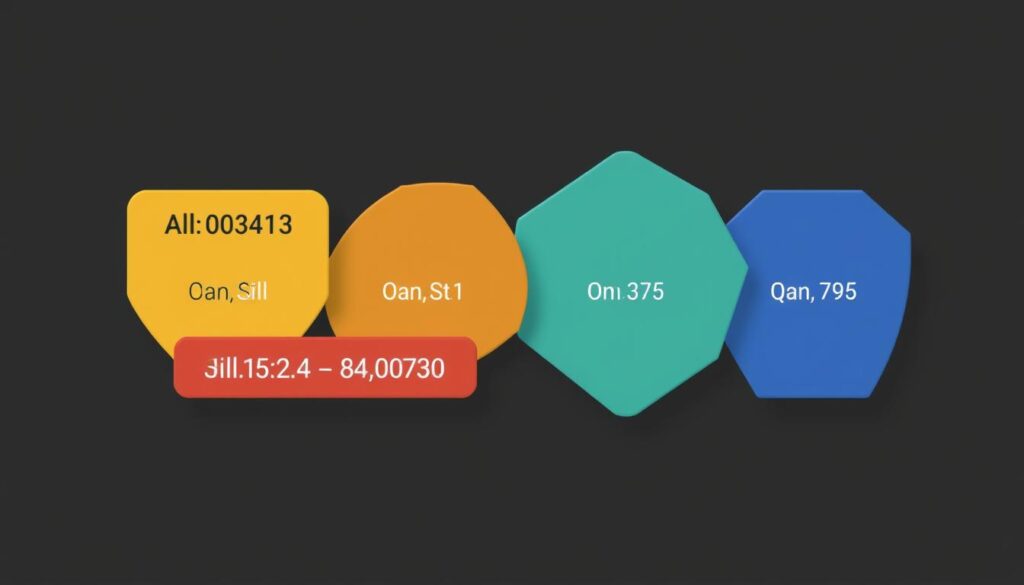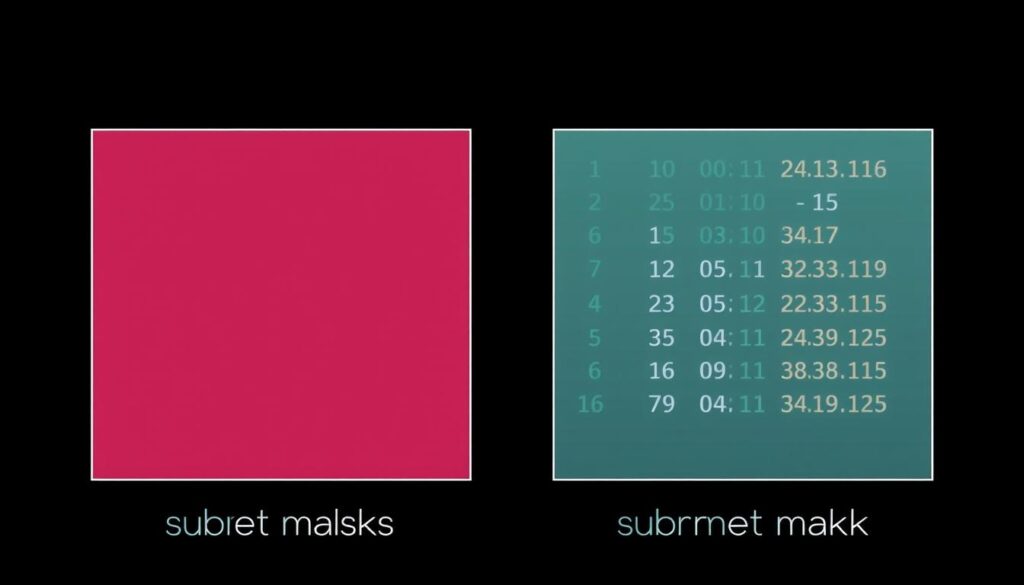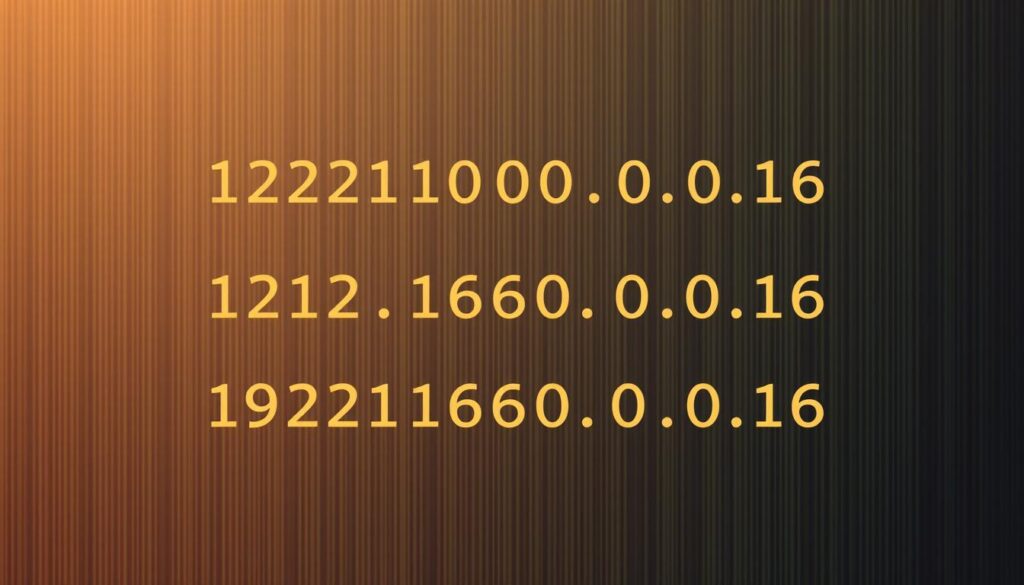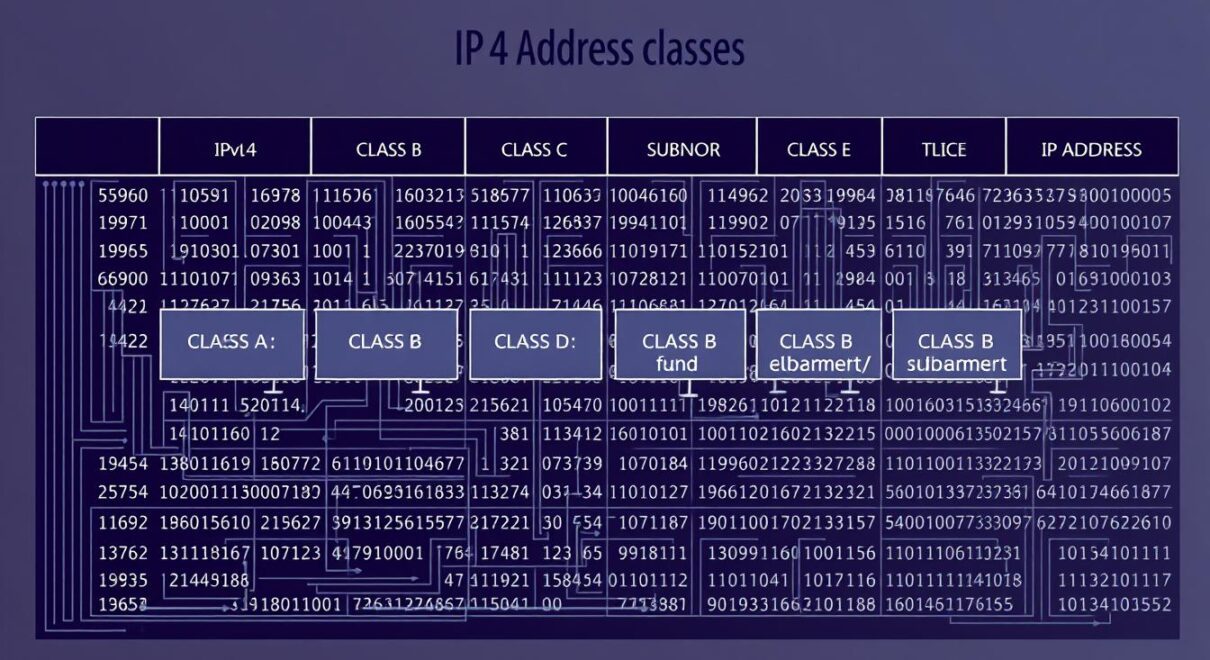IP address classes organize network addressing. They help manage the numerous devices connected to the internet. Let’s explore how these classes shape our digital world.
Network addressing ensures smooth device communication. IP address classes guide your data to its destination. We’ll examine how these classes function in the IPv4 system.
IP addresses act as digital zip codes for devices. They consist of four numbers between 0 and 255, separated by dots. These numbers follow a structured system based on IP address classes.
Understanding these classes is crucial. It helps us grasp how the internet routes data globally. This knowledge is key to effective network management.
Key Takeaways
- IP address classes organize network addressing
- IPv4 uses a system of five classes: A, B, C, D, and E
- Each class serves different network sizes and purposes
- Classes A, B, and C are most common for everyday use
- Understanding classes helps in network design and troubleshooting
Introduction to IP Addressing Fundamentals
IP addressing is the core of network communication. It’s vital for anyone in network management or IT infrastructure. Let’s explore the key components of network addressing.
What is an IP Address?
An IP address uniquely identifies devices on a network. In IPv4, it’s four numbers separated by periods, like 192.168.1.1. These addresses help devices find and communicate with each other.
The Evolution of IP Addressing
IP addressing started with IPv4 in the 1980s. As the internet grew, IPv4’s limitations became clear. This led to IPv6, which uses a 128-bit address format.
IPv6 greatly expands the pool of available addresses. It addresses the problem of IPv4 address exhaustion.
Network and Host Components
IP addresses have two main parts: network identifier and host identifier. The network ID specifies where a device is on the network. The host ID labels a specific device in that network section.
This structure is key to understanding how IP addressing works. It helps organize and manage network communication effectively.
| IP Version | Address Space | Number of Addresses |
|---|---|---|
| IPv4 | 32-bit | ~4.3 billion |
| IPv6 | 128-bit | 340 undecillion |
Understanding these basics is crucial for effective network management. It forms the foundation for learning about IP address classes and modern techniques. This knowledge is invaluable for troubleshooting and optimizing networks.
Overview of IP Address Classes
IP address classes are the basis of classful addressing in IPv4 networks. They split IP addresses into five groups: A, B, C, D, and E. Each class has a specific use and fits different network sizes.

Class A addresses range from 1.0.0.0 to 126.255.255.255. They support large networks with up to 16,777,214 devices each. Class B addresses go from 128.0.0.0 to 191.255.255.255.
Class B is for medium-sized networks, allowing 65,534 hosts. Class C (192.0.0.0 to 223.255.255.255) suits small networks with 254 hosts each.
Class D (224.0.0.0 to 239.255.255.255) is for multicast apps. Class E (240.0.0.0 to 255.255.255.255) is for experimental use.
| Class | Range | Network Bits | Host Bits | Networks | Hosts per Network |
|---|---|---|---|---|---|
| A | 1.0.0.0 – 126.255.255.255 | 8 | 24 | 126 | 16,777,214 |
| B | 128.0.0.0 – 191.255.255.255 | 16 | 16 | 16,382 | 65,534 |
| C | 192.0.0.0 – 223.255.255.255 | 24 | 8 | 2,097,150 | 254 |
IP address classes are key for network admins and IT pros. This system helped allocate IPs based on network size. It also set the stage for better addressing in modern networking.
Class A IP Addresses: Large Network Solutions
Class A IP addresses are crucial for large-scale network addressing. They provide unique identifiers for devices in vast organizations. These addresses play a key role in network infrastructure.
Range and Structure
Class A IP addresses range from 1.0.0.0 to 126.255.255.255. The first octet identifies the network, while the other three are for hosts. This setup allows 16,777,214 possible host addresses per network.
Class A is perfect for extensive networks. It offers a huge number of unique addresses for devices.
Network and Host Portions
In Class A addresses, the network part uses 8 bits. The host portion takes up 24 bits. This split is shown in the default subnet mask: 255.0.0.0.
This setup enables 126 possible networks. Each network can support millions of devices.
| Class | First Octet Range | Default Subnet Mask | Example Address |
|---|---|---|---|
| Class A | 1-126 | 255.0.0.0 | 10.52.36.11 |
Practical Applications
Internet providers, big companies, and governments often use Class A addresses. The range 10.0.0.0 to 10.255.255.255 is for private networks only.
This allows organizations to create large internal networks. They can do this without using up public IP addresses.
Class A addresses are vital for efficient network addressing. They offer flexibility in large-scale environments.
Class B IP Addresses: Medium Network Architecture
Class B IP addresses are vital for medium-sized networks. They range from 128.0.0.0 to 191.255.255.255. These addresses can support up to 65,534 devices per network.
Class B addresses have a unique structure. The first two bits of the first octet identify the network as ’10’. This design allows for 16,384 networks with 65,534 devices each.
These addresses suit medium to large organizations, schools, and government agencies. They’re part of the ip address ranges for efficient networking.

Class B addresses were part of the original classful network design. They’ve evolved with classless addressing schemes. This change addressed fixed class system limitations.
It led to more flexible solutions like CIDR and IPv6. These new systems improved network management and efficiency.
| Class | First Octet Range | Networks | Hosts per Network |
|---|---|---|---|
| A | 1-126 | 126 | 16,777,214 |
| B | 128-191 | 16,384 | 65,534 |
| C | 192-223 | 2,097,152 | 254 |
The private IP address Class B range is 172.16.0.0 to 172.31.255.255. It offers ample space for internal network setups. This range is crucial for network design.
It allows for efficient subnetting and improved security. Network segmentation becomes easier with this address range.
Class C IP Addresses: Small Network Implementation
Class C IP addresses are vital for small-scale network setups. They’re perfect for local area networks (LANs) and small businesses. Let’s explore Class C addresses and their uses.
Address Range Specifications
Class C IP addresses range from 192.0.0.0 to 223.255.255.255. The first octet is always between 192 and 223. With a subnet mask of 255.255.255.0, Class C networks offer 254 usable host addresses.
Network Configuration
In Class C addressing, the first three octets represent the network portion. The last octet denotes the host. This allows for many networks but fewer hosts per network.
The format follows the pattern: Network.Network.Network.Host. This structure differs from Class A and B addresses.
| Class | First Octet Range | Network Bits | Host Bits | Total IP Addresses |
|---|---|---|---|---|
| C | 192-223 | 24 | 8 | 256 |
Common Usage Scenarios
Class C addresses are common in small office or home office (SOHO) environments. The private IP range 192.168.0.0 to 192.168.255.255 is popular for local networks. This range offers 65,536 potential addresses for small-scale setups.
Class C provides efficient address use for small networks. It minimizes wasted addresses compared to larger classes. For example, using a Class C network for two public IPs wastes only 252 addresses.
“Class C IP addresses strike a balance between network size and address efficiency, making them perfect for small business networks.”
Knowing public vs private IPs in Class C ranges is crucial. It helps with network management and security in small-scale setups.
Class D and E: Special Purpose Classifications
IP address classes D and E have unique roles in network communication. These reserved addresses are crucial for multicast addressing and experimental usage. They support specific network functions and research.
Multicast Addressing
Class D IP addresses span from 224.0.0.0 to 239.255.255.255. They enable one-to-many communication for multicast group addresses. This is ideal for streaming media and network protocols needing multiple recipients.

Class D addresses don’t have a subnet mask, unlike Classes A, B, and C. They’re not for individual devices. Instead, they serve groups needing the same data stream.
Experimental Usage
Class E IP addresses range from 240.0.0.0 to 255.255.255.255. These addresses are for research and development purposes. They’re not used in standard networking or given to organizations.
| Class | First Octet Range | Purpose |
|---|---|---|
| D | 224-239 | Multicast |
| E | 240-255 | Experimental |
The Internet Engineering Task Force (IETF) manages Class E addresses for testing new protocols. These addresses aren’t used daily but are vital for advancing internet technologies.
Understanding Subnet Masks
Subnet masks are crucial in IP addressing. They identify which part of an IP address belongs to the network or host. These 32-bit numbers work with IP addresses to define network boundaries.
A typical subnet mask looks like 255.255.255.0. This mask reserves the first 24 bits for the network address. The last 8 bits are for host addresses. This setup allows up to 254 unique host IP addresses.

Subnet masks are key for network segmentation and management. They help divide large networks into smaller, manageable subnets. This improves network performance and enhances security.
Subnet masks determine if a host is on a local subnet or remote network. This info is vital for TCP/IP configuration. It affects how devices communicate across networks.
Mastering subnet masks helps in designing and managing complex networks. It also aids in troubleshooting network issues effectively.
Private IP Address Ranges
Private IP address ranges are essential for network management. They allow organizations to create internal networks without public IP addresses. Let’s explore the different classes and their uses.
Class A Private Ranges
Class A private IP address ranges offer the largest pool of addresses. They span from 10.0.0.0 to 10.255.255.255, providing over 16 million unique addresses. This vast range suits large corporations with extensive network needs.
Class B Private Ranges
Class B private IP ranges cover 172.16.0.0 to 172.31.255.255, divided into 16 blocks. Each block contains 65,534 addresses. This range fits medium-sized networks or companies with multiple locations.
Class C Private Ranges
Class C private IP ranges are common in small networks and homes. They span from 192.168.0.0 to 192.168.255.255, offering over 65,000 addresses. This range suits small businesses, home networks, and individual departments.
| Class | IP Address Range | Total Addresses | Typical Use |
|---|---|---|---|
| A | 10.0.0.0 – 10.255.255.255 | 16,777,216 | Large enterprises |
| B | 172.16.0.0 – 172.31.255.255 | 1,048,576 | Medium-sized networks |
| C | 192.168.0.0 – 192.168.255.255 | 65,536 | Small networks, homes |
Private IP address ranges boost network security and use IPv4 addresses efficiently. They work with Network Address Translation (NAT) to connect private networks to the internet. This makes them crucial for modern networking.

Public vs Private IP Addressing
Public and private IPs serve different purposes in network communication. Public IPs enable internet connectivity, while private IPs work within local networks. Understanding their differences is key for proper IP allocation.
Public IP addresses span from 1.0.0.0 to 223.255.255.255. Internet Service Providers assign these unique identifiers for global device communication. Private IP addresses, however, fall into three distinct classes:
- Class A: 10.0.0.0 to 10.255.255.255
- Class B: 172.16.0.0 to 172.31.255.255
- Class C: 192.168.0.0 to 192.168.255.255
Private IPs can be reused across different networks without causing conflicts. They’re perfect for local area networks (LANs). Home routers often use the 192.168.x.x format for private IPs.
Public IPs are visible online and can reveal locations, raising security issues. Private IPs remain hidden within local networks, offering better protection. Network Address Translation (NAT) helps private IP devices access the internet.
ISPs charge for public IPs, while private IPs are free. Local network routers assign private IPs. This allocation difference highlights their unique roles in network communication.
CIDR Notation and Modern Addressing
Classless Inter-Domain Routing (CIDR) emerged in 1993, transforming IP address allocation. It replaced the rigid classful system, offering more flexibility and efficiency. CIDR notation revolutionized network management and IP address usage.
Benefits of CIDR
CIDR notation offers significant advantages to network administrators and organizations. It allows for precise allocation of IP addresses, reducing waste. Small companies can receive a /24 CIDR block with 256 addresses.
Larger organizations might get a /20 block with 4,096 addresses. This flexibility enables fine-tuned subnet creation, impossible with classful addressing.
A /24 IP block can be split into smaller subnets. For example, it can become a /25 network with 126 hosts. It can also create a /26 network with 62 hosts.
Transition from Classful to Classless Addressing
The shift to classless addressing marked a significant change in network design. Classful addressing wasted IP addresses due to its fixed allocation system. CIDR solved this with variable-length subnet masks.
This allows for more efficient use of the IPv4 address space. It’s crucial given the limited number of available IPv4 addresses. CIDR has delayed IPv4 exhaustion and eased migration to IPv6.
CIDR eliminated traditional class distinctions, enabling more scalable networks. It supports almost unlimited levels of subnetting. This allows flexible subnet hierarchies beyond the three-tier limit of classful addressing.
This advancement in IP allocation has been pivotal. It supports the rapid growth of the internet. It also bolsters modern network infrastructures.
Network Segmentation Strategies
Network segmentation boosts security and performance in modern IT environments. It divides networks into smaller subnetworks, improving asset management and data protection. This method uses careful IP address allocation to create distinct segments with unique security measures.
A key benefit is isolating critical data from potential threats. This reduces the attack surface by creating microperimeters around valuable assets. For instance, guest Wi-Fi can be separated, limiting access to just the internet.
Network segmentation helps comply with standards like PCI DSS. It confines credit card info to specific zones, easing compliance. This approach also enhances network performance by reducing congestion and optimizing resources.
As networks grow more complex, advanced techniques are gaining popularity. Microsegmentation and intent-based segmentation offer granular control over individual workloads. These strategies cover the entire network, including all endpoints and devices.
By adopting these strategies, organizations strengthen their defenses against cyber threats. They also maintain flexibility and efficiency in their IT infrastructure. This balance of security and functionality is crucial in today’s digital landscape.





